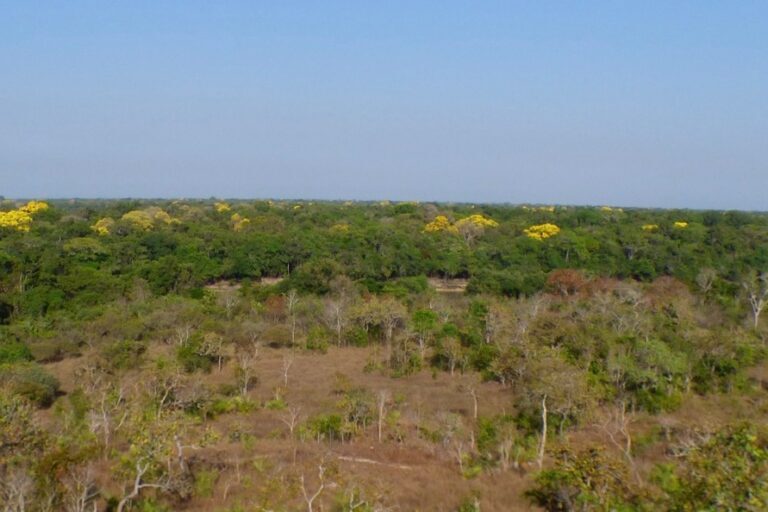With its wine-hued head, cream-colored body, and its wings striped in black and chestnut brown, Kaempfer’s woodpecker makes quite an impression. Yet, despite its conspicuous looks, the bird has managed to evade detection for almost a century.
First described by ornithologist Emil Kaempfer in the mid-1920s in the Brazilian state of Piauí, east of Tocantins, it was initially thought to be a subspecies of the rufous-headed woodpecker (Celeus spectabilis). But differences in habitat, behavior and plumage led some ornithologists to conclude they were looking at a new species. They didn’t have the chance to confirm it, however: with no further sightings of the bird recorded, they thought that Kaempfer’s woodpecker had disappeared.
It wasn’t until the early 2000s that a fresh look at the differences between the two woodpecker species showed that Kaempfer’s woodpecker was indeed a distinct species endemic to Brazil. Then, in 2006, biologist Advaldo Prado captured a live individual in Tocantins, showing that scientists previously had just been looking in the wrong place.
Tulio Dornas, an ornithologist from the Federal University of Tocantins who has studied the species’ ecology and distribution, said an error in the early records may have contributed to the confusion. Kaempfer’s original specimen, he said, “was collected at the extreme edge of the Cerrado, during an expedition to the Caatinga, so ornithologists back then wrongly assumed it was a bird from that biome,” Dornas told Mongabay.
Yet even in the Cerrado, finding the bird can be a challenge, he added. The species thrives in the gallery forests that line the riverbanks of the Cerradão, a type of dry forest within the savanna ecosystem. They’re particularly fond of shaded areas with mature taboca bamboo plants (Gauda paniculata), which host the woodpecker’s main food source: ants. Reliant on only a few ant species that nest within the bamboo, the woodpeckers flit between thickets, drilling holes into the shoots to extract their prey.
As researchers narrowed down the bird’s habitat and intensified their search, sightings began to be reported from several Brazilian states, including Goiás, Matto Grosso, Maranhão and Piauí, indicating that while the woodpecker was rare, it wasn’t as endangered as previously thought. As a result, its conservation status on the IUCN Red List improved from critically endangered to vulnerable.
But with about 47% of the Cerrado’s original cover lost to agriculture, the habitat of Kaempfer’s woodpecker remains under pressure; today, it’s either severely fragmented or at imminent risk of agricultural conversion. As more details about the species came to light, concern about its future has also increased.
“We couldn’t find it in a single protected area, be it a national or state park, anywhere in Brazil,” Dornas said.
David Vergara-Tabares, a researcher at Argentina’s National Research and Scientific Training Council (CONICET) who has studied land-use impacts on woodpeckers globally, said the situation facing Kaempfer’s woodpecker isn’t uncommon in the region.
“Protected areas cover less than 10% of the regions where these birds are found in South America,” he told Mongabay. “Approximately a quarter of woodpecker species’ distribution ranges are affected by agriculture and urbanization. It’s a problem that has been worsening in recent years.”
https://news.mongabay.com/2023/08/to-safeguard-a-rare-brazilian-woodpecker-an-ngo-bought-out-its-habitat/


